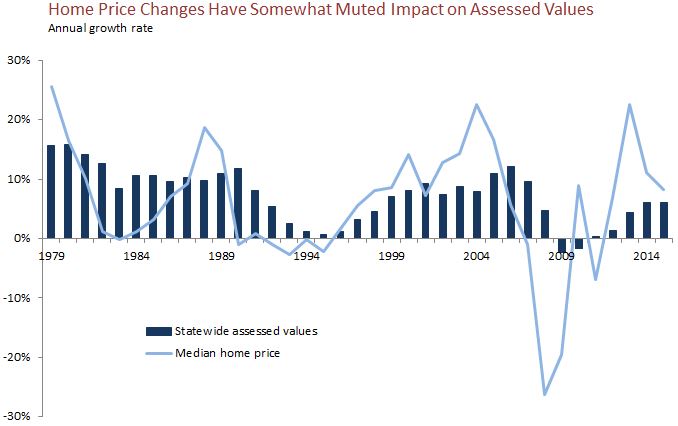California Assesses Property Owners Based on Purchase Price. A property’s assessed value (AV) is the taxable value of the property used to determine a property owner’s property tax payment. Under California’s tax system, the AV of most property is based on its purchase price. Under this system, when real property is purchased, the county assessor assigns it an AV that is equal to its purchase price. Each year thereafter, the property’s AV increases by 2 percent or the rate of inflation, whichever is lower. This process continues until the property is sold, at which point the county assessor again assigns it an AV equal to its most recent purchase price.
AV More Stable Than Home Prices. Largely because AVs are tied to purchase prices and not current market values, AV tends to me more stable than home prices. As the figure above shows, this means AV neither rises as quickly as home prices, nor falls as dramatically. Home prices have experienced annual declines ten times since 1979, compared to only twice for AV.
Home Prices Have Delayed Impact on AV. Changes in AV also tend to lag changes in home prices. During the recent housing boom and bust, home price growth peaked in 2004, while AV growth peaked in 2006. Similarly, home prices declines began in 2007 and bottomed out in 2008, while AV did not decline until 2009.
Fiscal Outlook Assumes Continued Growth in AV. Following multiple years of sluggish growth, AV growth has been strong recently. Statewide assessed property values increased by 6 percent in both 2014-15 and 2015-16, compared to an average annual rate of less than 0.5 percent over the preceding five years. Our November 2015 Fiscal Outlook anticipates this robust growth to continue in the near term, with assessed values projected to grow by just over 6 percent in 2016-17.
Follow @LAOEconTax on Twitter for regular California economy and tax updates.

